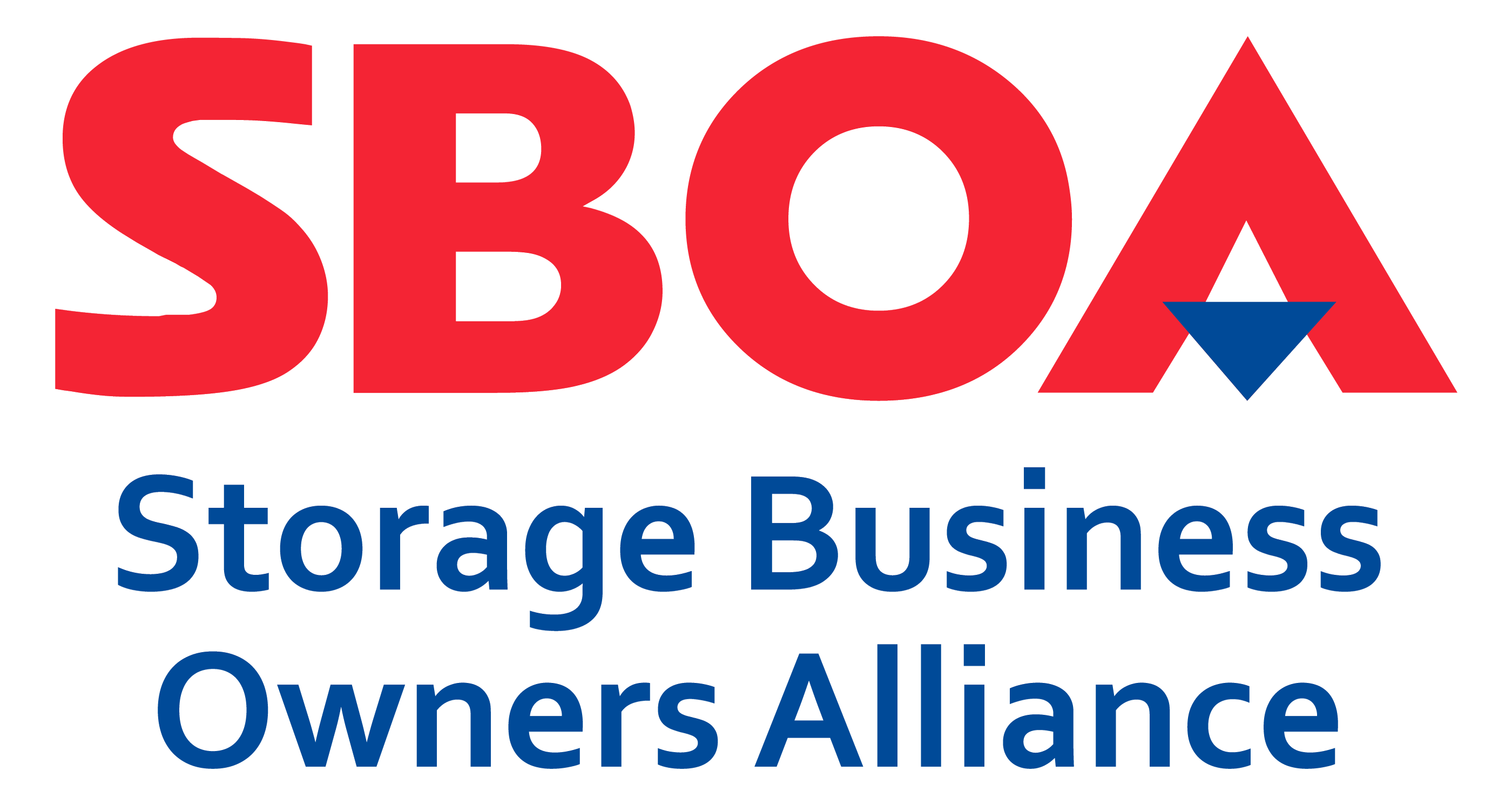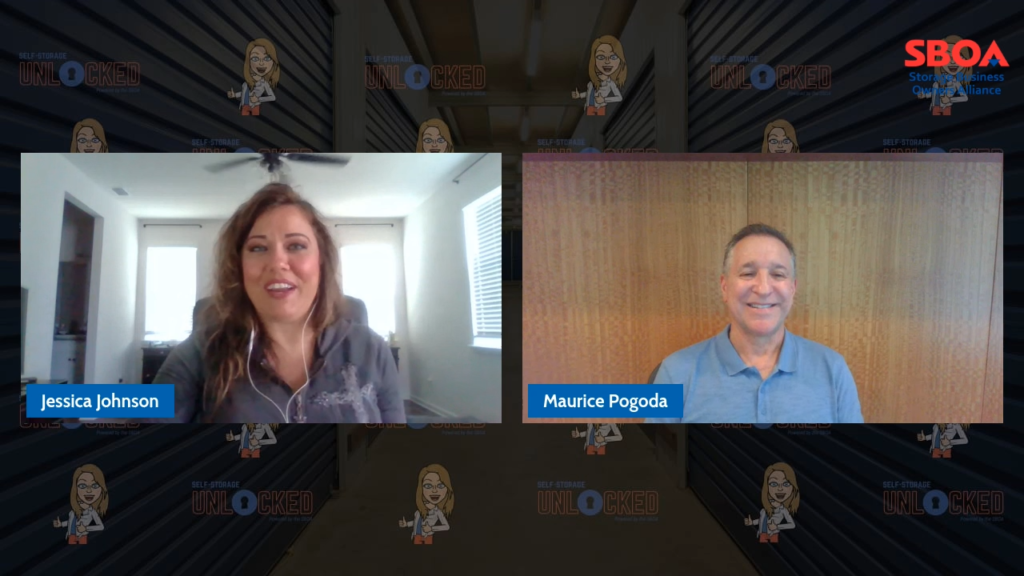34 years is a long working in any industry. But Maurice Pogoda from Pogoda Companies has been going 34 years strong in self-storage … sounds like he has truly found his niche. Maurice joined SBOA Vice President Jessica Johnson for an episode of Engaging with the Experts, as part of the Self-Storage Unlocked series. Maurice is the Founder and President of Pogoda Companies, which provides management and brokerage services to owners of self-storage properties. Currently managing locations in Michigan and Ohio, Pogoda Companies has 58 properties and is continuing to expand. In this interview, Maurice discusses surprises from the industry, what he looks for in new properties, and his suggested tools for success.
The following interview has been edited and condensed for clarity. View the full video here.
How did you get started in self-storage?
After I got my MBA from the University of Michigan, I was working as an income property broker for a prominent brokerage. While working there I got the feeling that I was really cut-out to be on my own. So, I started exploring to see what industry I could find where I wasn’t going to be the small fish in the big pond. At this point, self-storage was a relatively small industry – roughly only 10,000-15,000 properties across the country, where now it is estimated that there is somewhere between 50,000 to 60,000 properties.
As a marketing-oriented person, I know one of the keys is to find your niche. And I saw that not many knew much about self-storage. I ended up starting out as broker, and I had the quick opportunity to dominate one market which was Michigan and sell a lot of storage facilities, which is how I got started.
In the early part of your career, what were some of the biggest surprises you faced?
Something that was always alarming were the various recessions over the years. We all think back to 2008, and even now with the pandemic we are still in. And for me, having started in 1987, there was the savings and loan crisis in 1990. A lot of people may not remember it, but banks stopped financing. Everything stopped at that point. So here I was, a broker, not being able to sell anything because no one could get financing. But with self-storage facilities becoming foreclosed, I started getting phone calls asking if we manage properties. And my answer was of course we do. One thing led to another, and I started managing properties and being presented with buying opportunities. As they say, when one door closes, another one opens.
One of the other interesting surprises is seeing how much the self-storge industry has changed over time. In the mid-1990s, when Wall Street started recognizing self-storage, and the REITs came into existence, suddenly self-storage wasn’t the low man on the totem pole – it was starting to move up the food chain. And right now, the interesting thing is how everyone wants to enter this industry.
What are the top tips you would give to someone that’s brand new to this industry, to be successful?
The first thing I tell people is to slow down. If you’re going to get into an industry and invest a few hundred thousand to many millions of dollars, you should really know what you’re talking about. I suggest that they join their state association, join the SSA, go to ISS and SSA conventions. We’re in a very friendly industry – people are very happy to share their knowledge with others in most cases for free.
I also mention that people need to understand their market. I know it’s what you would expect people to do, but a lot of people don’t understand that they need to figure out where they fit in. They need to understand whether there are any other new storage facilities planned, the ease of entry to get into a market, as well as the demands within that market.
The last thing I tell people is that if you’re going to get into the business go to the shows, talk to all the vendors, understand the products out there, and understand what you need to run a successful storage property. Back in the day, people did everything by hand, and although they were unsophisticated, those were always the best properties to take over because you just smelled opportunity. There are various possibilities, and you have to decide what you want for your facility.
When you started, how did you grow to where you are now? And where is Pogoda Companies headed in the future?
I started off as a single broker, and with my wife’s support, got involved in management. When I realized I couldn’t do it myself, I started hiring area managers. But then there were buying opportunities. And it’s a little scary at first to do it on your own but having actual property management experience makes the buying process that much better because you actually know what you’re looking at versus some people who are buying strictly based on numbers.
In the mid-1990s, I started building storage facilities. As I got to know the markets better, I found some locations that seemed appropriate. Moving into the late 1990s and early 2000s, I had my first liquidity events – I decided to sell some properties. That was a way to take advantage of the high prices at the time as well as fund future acquisitions and future development. I went through that process many years.
Now, I have three grown sons – two of them are currently in the business with me now and the third is joining sometime this fall. The interesting thing is that all three of them came from very substantial backgrounds before joining, which was always my personal goal. I never wanted to have family come into the business just because they were family – they’ve come into the business because they wanted to. The two that are in the business right now have very substantial real estate backgrounds and the third son, who has done finance work with major companies, is coming in because at this point, we’re really in growth mode.
What are some key attributes you look for when you’re entering a new market?
We’re looking for opportunity. We’re looking for properties where through our management, through our construction team, through our knowledge of the industry, we can improve. Frankly, we’re looking for mom and pops that we can buy up. In general, our sweet spot is to find properties in the 50K SF range, where there’s some room for expansion. Some are older properties, and our mode is to go in and renovate so essentially its brand new when the renovation is finished even though it may be a 1993 product. At that point, we’ll look at some of the basics. We look at the rental rate structure, existing tenants, and competitors. We strive to be the price leaders in our market and sometimes can be 20-30% higher than our competitors. And we are comfortable being at an 88% occupancy rate and making a ton more money than the guy down the street who is 95% occupied. We’re always looking for the right location, and the right visibility. We’re also looking to continue to scale up in markets that we’re in or go into new markets where we feel there’s the right opportunity for growth.
What are tools that you use to help your locations operate efficiently?
There are two major tools. The first is having a great, well-trained manager with systems in place on how you’re operating your property. That takes precedence over everything. I believe that’s one of the areas where Pogoda Companies happens to excel. We believe in the great value of having a manager. We do have some remote offices with kiosks, but they’re always connected up to humans who are close by.
The other tool has to be your website. Your website must work, have the right presence, have your SEO set up properly, and have it be user-friendly. The pandemic forced us to go to a rent online model. And frankly, it’s the best thing we’ve ever done. About 25-30% of our rentals now are coming from people renting online instead of having to come to the office. It’s touchless, its safer and saves the manager time.
What’s your suggestion for an owner or operator to differentiate themselves in a market?
It’s probably service. It all comes back to training and the manager. You’re going to have a hard time competing against people like us and against the REITs. For people trying to compete, being local in your focus, which was old school thinking back to the 1990s, has come back around again. It’s all about being involved in the community. For small towns this can be supporting a little league team and having your storage company’s name on the back of their uniforms. The key is to treat the customer the way you’d want to be treated. That’s how you’re going to differentiate yourself.


